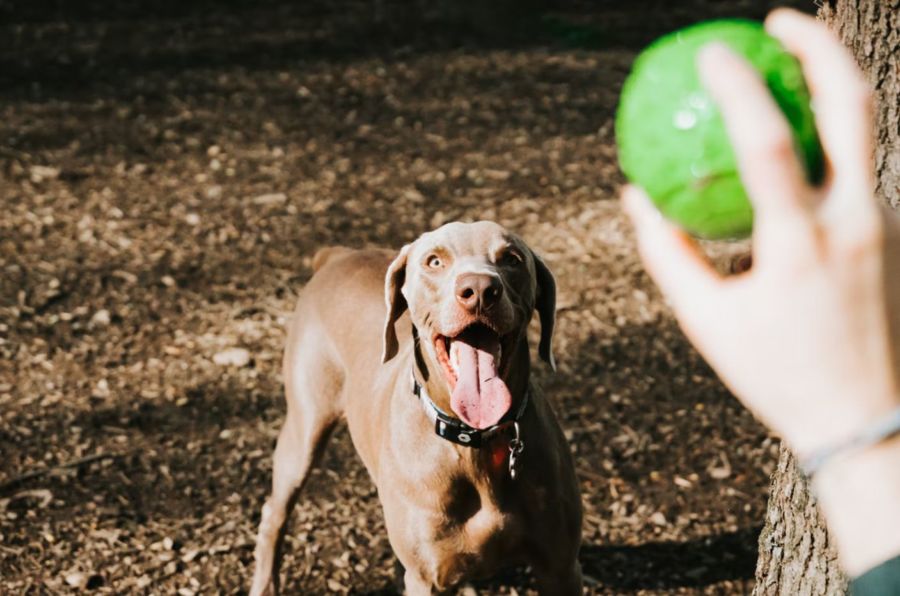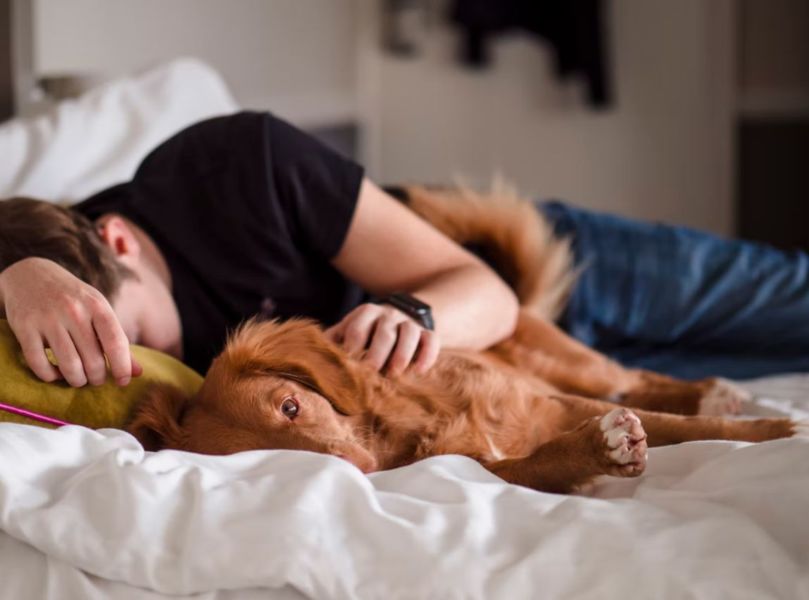Choosing the right dog for you and your family often comes down to how much energy a dog tends to have. Does your desired breed love running around and going for long walks, or do they want to cuddle on the couch to watch TV with you? It’s in both of your best interests to pick a dog that has an energy level compatible with your lifestyle. You may think that figuring out a dog’s behavioral tendencies is too tricky. Scientists study different dimensions of a dog’s personality, but you do not need to run your clinical trial to understand your dog.
Here’s your leash-led walkthrough to determine a dog’s energy level.
1. Look at the breed
When determining a dog’s energy level, the breed can be a contributing factor but not necessarily a determining factor. Common behaviors displayed by certain breeds are not as crucial as individual personality. This tendency is especially true if the dog is a mutt with multiple breeds in its lineage.
Certain breeds tend to be more energetic. These breeds include Border Collies, Jack Russell Terriers, Dalmations, Labradors, Siberian Huskies, and Golden Retrievers from breeders like these. Provide these breeds with plenty of exercise and playtime. High-energy pups often enjoy at least two hours of movement a day.
Some breeds that often have less energy include French Bulldogs, Great Danes, Basset Hounds, and Bulldogs. These dogs may not want very long walks. While walking your pooch, you should see if they signal they want to finish walking by frequently sitting or stalling.
If you love being outdoors and going for long walks, you probably do not want a Basset Hound that prefers to nap and stay indoors. Likewise, if you are more of a homebody who does not want to go on long walks, high-energy dogs will likely be happier elsewhere. Knowing the exercise requirements of the breeds on your list can help you make the best decision for your future four-legged friend.
2. Consider environment

The environment a dog spends their time in can often affect a pup’s energy level. A dog in a shelter or a breeder may display a significantly different personality while in your home. While shelters and breeders do personality screenings of all their dogs, it is understandable that you may want to do an assessment yourself since you know your energy level.
When considering a new dog, try to see them in as many different environments as possible. Often, shelters and breeders will allow you to go on a walk or play with the dog. Use this time to gauge how well your energy levels mesh. Try to spend as much time as possible with a potential dog before adopting them so you can avoid any surprises once you’re home sweet home.
3. Observe the dog outdoors
Taking your dog on a walk is a great way to gauge its energy level. A dog will often indicate if they prefer a long or a short walk. The animal may show that they wish to stop by slowing down or lying on the ground.
Your pup’s energy level may change depending on various stimuli. You can check if certain things make your puppy more energetic. For example, does your dog grow more hyper around other dogs or people? Take your dog into several different environments to observe their behavior. You may even want to take your pup out to dine with you to assess how excitable they are.
4. Observe the dog indoors

Does the dog seem antsy or destructive? This behavior is standard if a dog needs stimulation or exercise. You can go a long way towards reducing mischievous behavior by keeping your dog entertained. On the other hand, a dog getting the stimulation they need will likely appear relaxed. Adequately entertained dogs may nap or contentedly play with toys. A dog will usually make which toys they prefer clear, and they will likely develop a schedule.
Other than providing your dog with plenty of exercises, training can be an excellent way for them to channel their energy. Teach your pup some basic tricks such as “sit” and “stay” and expand from there. Some dogs may respond more readily to training than others.
5. Find their play style
Dogs can have many different play styles, and that is A-okay. Some canines love to fetch, while others only need a chew toy to keep them happy. While some dogs enjoy solitary play, other pups would rather play with a friend. When you first meet your pup, try out a few different playstyles to find one that works well for both you and your dog’s energy levels.
Play with your dog using a variety of methods under different circumstances. Playing allows you to understand your pup’s preferences under various conditions. Give your pet access to a few different toys, including chews, squeakers, toys for tugging, and fetch toys.
Take a look at how your pup interacts with other dogs. Some dogs enjoy playing with every dog they meet, while others like other dogs but do not love playing with them. Instead, an introverted pooch may watch from the sidelines. Other dogs prefer to fly solo.
6. Age can be a factor
Like breed, age is not a factor that can fully determine how calm your dog is. However, if your pooch is under two, they will likely be much more energetic than an older dog. If you are looking for a relatively calm dog, you may want an older dog. Of course, take the other variables into account since some older dogs can still have plenty of energy.
Wrap up
Just like humans, dogs can have all kinds of temperaments. Some are hyper, and some like to chill out for most of the day. Set you and your dog up for success by choosing a pup with an energy level that you can engage.
Observe your dog under plenty of different circumstances to assess how energetic they are. Puppies may be animated in some situations but quiet in others. Just be patient and give your dog time to reveal all the facets of your personality to you.
























































